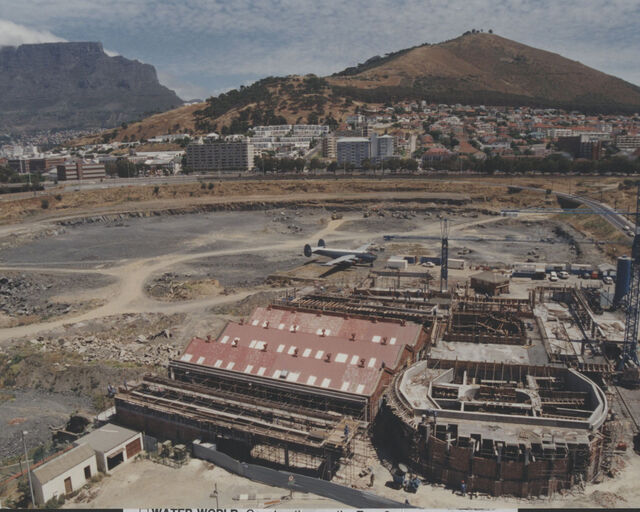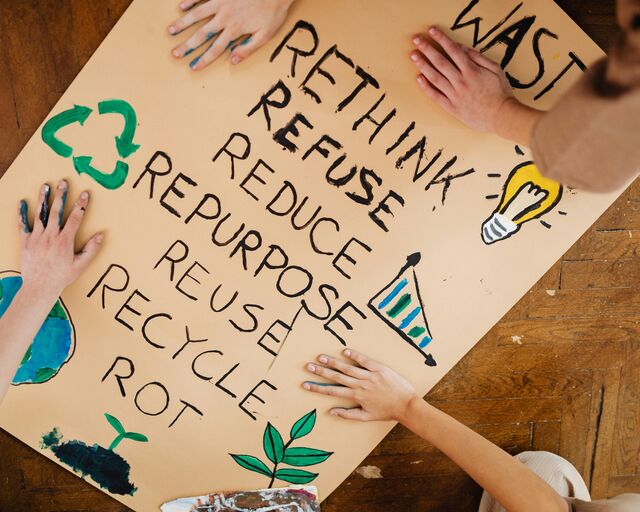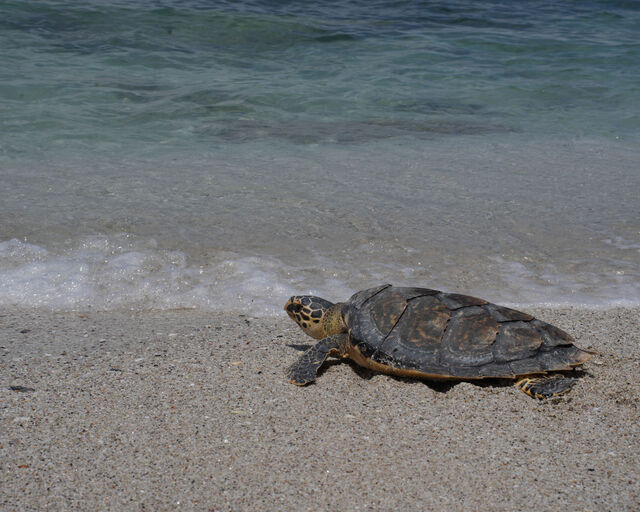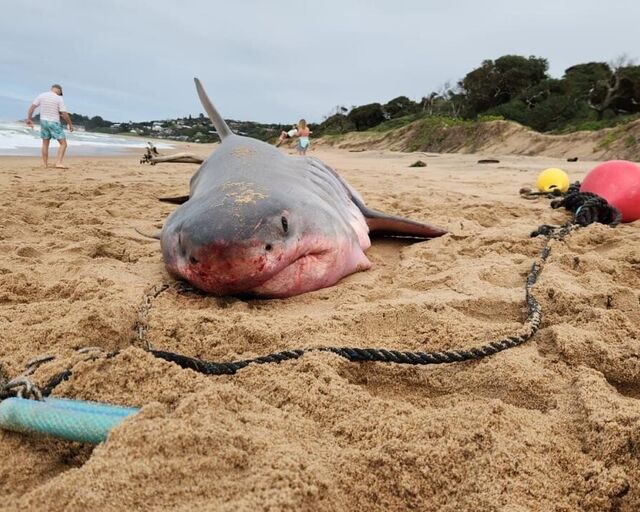What the Two Oceans Aquarium learned from 2025's United Nations Ocean Conference
This month, the ocean took the global stage at the United Nations Ocean Conference (UNOC), which took place in France from 9 – 13 June 2025. Our Two Oceans Aquarium Foundation’s Dr Judy Mann-Lang, Executive of Strategic Projects, avidly followed the conference’s proceedings and shared her thoughts with us.
Ours truly is a “blue planet” – water covers a whopping 71% of the Earth’s surface. Most of this is the ocean, sustaining life in innumerable ways: Acting as the world’s largest carbon sink, regulating the planet’s climate, supporting millions of jobs, and more. Without the ocean, life as we know it would cease to exist. Despite this, the ocean faces continually escalating threats of overfishing, pollution, and climate change. The effects of these threats can be felt with increasing urgency across the globe.
The UNOC intends to galvanise global action to protect the ocean, in line with Sustainable Development Goal (SDG) 14: “Conserve and sustainably use the oceans, seas, and marine resources for sustainable development”. The overarching theme of this year’s conference was “accelerating action and mobilising all actors to conserve and sustainably use the ocean”. This meant building on the commitments made in previous years to further support and effectively implement ongoing processes that contribute to marine conservation and sustainable ocean use. This culminated in the “Nice Ocean Action Plan”, an action-oriented and inter-governmentally agreed declaration of commitment.
Dr Judy Mann-Lang reports that roughly 60 Heads of State and 15 000 participants attended the conference – the ocean truly took centre stage.
What are our key takeaways from UNOC?
1. The High Seas Treaty is just a handful of countries away from being ratified.
The High Seas are the parts of the ocean beyond each nation’s exclusive economic zones (EEZ) – these waters are some of the most heavily exploited in the world. The High Seas Treaty was signed in March 2023 by the 160 member states of the Intergovernmental Conference on Marine Biodiversity of Areas Beyond National Jurisdiction to protect these spaces.
By signing the Treaty, the nations acknowledge the rights and responsibilities of all to act as stewards to protect the ocean for current and future generations. This is the first step towards ratification – signing the treaty indicates each country’s willingness to formally consent and implement the new international law.
“Excitingly, it looks likely that the High Seas Treaty will be ratified, with just 10 more countries needed before it has the required 60 ratifications. South Africa has signed, but not yet ratified, the Treaty,” says Judy.
Once the Treaty has 60 ratifications, it will enter into force, enabling international efforts to protect our ocean, mitigate climate change, and safeguard the livelihoods of billions of people around the world.
2. More action is needed to halt deep-sea mining.
Deep-sea mining is an emerging, yet profoundly concerning, industry. Since 2022, 33 countries have called for a temporary ban on the practice. At UNOC 2025, a further four countries added their voices to this call.
“37 leaders committed to a moratorium on deep-sea mining – this is significant, but much more is required,” says Judy. “The deep sea is the last frontier in the ocean, and the impacts of mining the deep sea are likely to be disastrous”.
It is worth noting that the bulk of deep-sea mining’s target mineral deposits are found on the abyssal plains of the High Seas. This makes the ratification of the High Seas Treaty even more vital. While further research is required to assess the impacts of deep-sea mining, it is highly likely that this practice will cause irreversible damage to the seafloor and marine ecosystems.
The direct impact on marine life is unquestionable – benthic, less mobile organisms may be killed by heavy mining equipment or smothered by the sediment plumes, while the sound pollution from these activities could negatively impact megafauna like whales.
While it is heartening that the moratorium is gaining traction, much more action is needed to avert deep-sea mining.
3. The World Trade Organisation’s agreement to stop harmful fishing subsidies needs to be implemented (and soon).
In June 2022, the World Trade Organisation met a significant milestone by prohibiting harmful fisheries subsidies, which play a huge role in the widespread decline of global fish stocks. This is a key international measure that requires governments to avoid supporting unsustainable fishing methods. This is expected to help governments align their subsidy policies with the sustainable use of marine resources.
“102 members of the World Trade Organisation have formally accepted the agreement, and they need 111 members to ratify it, allowing the agreement to become legally enforceable,” says Judy. “South Africa accepted the agreement in March 2024”.
The agreement prohibits subsidies in three situations: When fishing activities are illegal, when fish stocks or biomass are depleted with no measures in place to help them recover, and when fishing occurs on the High Seas outside of any management arrangement.
“One would think that subsidies contributing to Illegal, Unreported, and Unregulated (IUU) fishing or for overfished stocks would already be stopped. But no – these subsidies still encourage levels of fishing pressure that marine resources cannot bear, threatening not only marine ecosystems but also the food security and livelihoods of millions of people who depend on fishing. These people are often those in vulnerable coastal communities in developing countries,” says Judy.
Even when the abovementioned situations are avoided, fishery subsidies can still be harmful. They often indirectly encourage the development of massive fishing fleets and incentivise excessive fishing pressures. This is why UNOC aimed to address the root cause of the problem – preventing subsidies from contributing to overfishing in the first place.

What does UNOC mean for our Marine Protected Areas?
“The good news is that suddenly, it would appear that the world knows how critical Marine Protected Areas are for ocean health,” says Judy. “If we give the ocean a chance, it is remarkably resilient and can recover. Once recovered, MPAs can help to sustain life and enhance biodiversity in adjacent areas of the ocean.”
In South Africa, we have 42 Marine Protected Areas (MPAs). MPAs help to promote fisheries sustainability, maintain healthy marine ecosystems, protect the abundant variety of species living there, and help people to benefit from the ocean. While the call for 30x30 (30% of the ocean protected by 2030) is unlikely to be achieved, several new MPAs were proclaimed at the UNOC this year. Some of them, like those in Chile and French Polynesia, are impressively large. It is also vital to remember that those most affected by the creation and management of any MPA are local communities – they need to be a part of the process and management.
As with all MPAs, the level of protection is what really matters. Generally, MPAs are divided into zones with limitations on the human activities that may take place in them. The two major zones are Restricted Areas (a.k.a. "no-take zones") where fishing is strictly prohibited, and Controlled Areas where some activities, like angling or spearfishing, may be allowed with proper permissions.
“We have far too many ‘paper parks’, in which nothing is protected,” says Judy. “Announcements at conferences are easy – it is the implementation back at home that is difficult and needs political willpower, which we do not see enough of”.
A tiny 8.3% of the ocean has some form of protection, and only 2.8% of that is full protection. Hopefully, the world’s commitment to ocean protection will increase in the wake of the UNOC.
“When I started my career in marine conservation over 30 years ago, very few people even thought about the ocean, unless it was for extractive purposes or as somewhere to deposit waste. Now, we have annual conferences and world leaders talking about the vital importance of caring for the ocean, we have new NGOs popping up every year focused on ocean conservation, and articles on the ocean appear throughout the media,” says Judy.
This year’s UNOC certainly brought the ocean to the forefront, highlighting the importance of concrete mechanisms for caring for our blue planet. However, there is still much work to be done to accelerate action and mobilise all to conserve and sustainably use the ocean.
Related News
Sign up to our Newsletter
Receive monthly news, online courses and conservation programmes.




